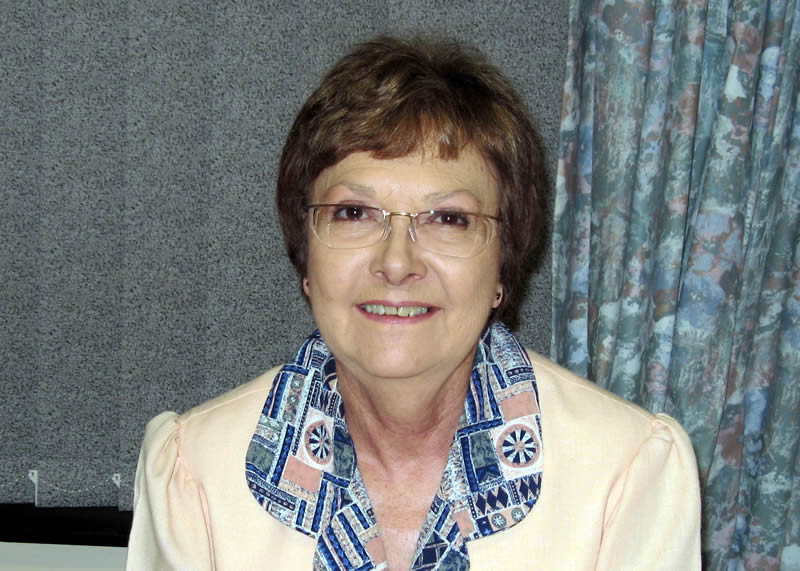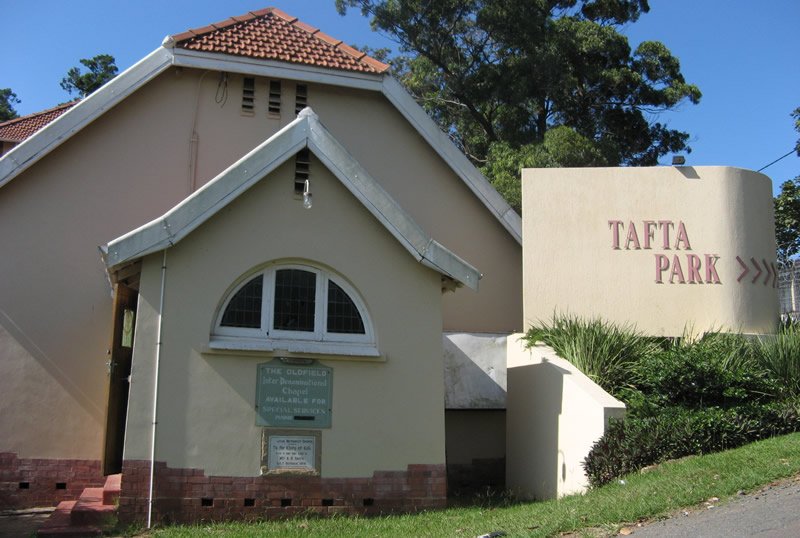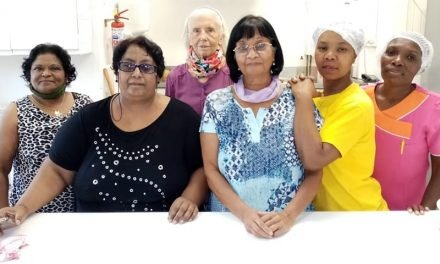6 iconic buildings that have shaped our heritage
September is Heritage Month, a time to celebrate the culture and history of our people. As an organisation that has served the people of Durban for 63 years, Tafta has its own proud heritage. Where we come from as an organisation is closely linked to the buildings we own. Some are existing buildings that have been converted to old age homes, while others were built specifically for this purpose. Journey through history with us, as we celebrate five iconic heritage buildings.
1. Cambridge House
Cambridge House was Tafta’s first old age home. As such, it holds a special place in our hearts. Built almost a hundred years ago in 1924, the North Ridge Road property was originally used as an orphanage for girls. It was officially opened by Lady May Cambridge, daughter of the governor-general of South Africa, the Earl of Athlone. During the 60s, Cambridge House became a home for 23 elderly ladies of ‘genteel’ birth.
Tafta took over the management of the Home in 1965. Since then, we have extended and renovated the property, which now includes Robert Storm House next door. Today, Cambridge Gardens as it is known, offers 77 upmarket one- and two-bedroom flats. There is also a communal lounge and diningroom, library, hairdresser, and coin operated laundry within the complex.
2. John Conradie House
Named after the founder of Tafta, this Home was purpose built to meet the needs of frail elderly people. At the time, there were no facilities of this kind in Durban. Tafta bought the land in Prince Street from the Durban Corporation, which also provided funding in the form of a long-term, low interest loan. A couple of blocks away from Addington Hospital, the site was ideal for an old age home.
Architect Ernest Hudson Bennett designed the building specifically to meet the needs of frail elders, with input from the Tafta management team. The building had seven floors with accommodation for 198 elders. Each floor had its own lounge, and there was a communal dining room on the ground floor, together with administrative offices. There was also a small chapel on the first floor.
Secretary for Social Welfare and Pensions, Mr CJH Vorster laid the foundation stone in June 1968. Less than a year later, the building officially opened to the first residents. It has remained popular ever since and firmly established Tafta as leaders in the field of elder care.
In 2017, after buying the site next door, Tafta began building another block of flats, Langeler Towers. At the same time, John Conradie House underwent a major facelift. The buildings are joined together at ground level, allowing residents to move freely between the two. Although the Langeler Towers flats are bright and modern, with stunning views over the beachfront and harbour, John Conradie House continues to be our flagship Home. What a fitting memorial to the founders of Tafta, John and Anna Conradie.
3. Kings Hall
This 17-storey block of flats and shops in Aliwal Street (now Samora Machel Street) in the Durban CBD was bought by Tafta in 1980. Many felt that it was a high-risk investment. However, it turned out to be a very wise investment indeed. To this day, demand for flats in the building remains high. Kings Hall boasts 132 one- and two-bed flats for rent or sale on the Life Rights Scheme.
Kings Hall is also the heart of Tafta. It serves as our Head Office, with spacious office space for management, admin and social services staff. Going forward, we plan to establish a new in-house primary health clinic in the building. This will put medical services within easy reach of residents who find it difficult to get to government facilities in the area.
4. John Dunn House
In the late 70s, the community of Wentworth formed an organisation to care for elderly people in the area. Chairman of the new Durban Senior Citizens Association was the Reverend John Dunn, an ordained minister of the Anglican Church. Fundraising began in earnest for a new old age home that would offer frail care and other services.
After a R1.6 million loan was secured from the Department of National Housing, the building went ahead. Tafta’s director at the time, Mr Michael Claye, offered guidance to the new association and both Tafta and the Rotary Club of Durban came on board. The Durban Benevolent Society provided bridging finance, while the boys of Kearsney College also donated the proceeds from their cycle tour – R81 000 – towards the project.
Reverend Dunn saw his dream become reality when he laid the foundation stone for the new building in August, 1987. He died on 13 October 1989, but fortunately lived long enough to attend the opening of the Home, named in his honour, in 1988. His granddaughter, Mrs Ann Dunn, currently resides here and is extremely proud of the fact that her family was instrumental in establishing the Home. Although very frail, she is still able to express that she is very happy here.
Another resident, Dumizile Ndlovu has lived at John Dunn House for 24 years. She is now very frail, but still remembers what she describes as ‘one of the most precious memories of my life’. This was when the staff organized a hoist to lift her and take her to the beach.
John Dunn House was the first facility of its kind, offering a 104 bed frail care facility and a wellness centre – the Primrose Centre – for elders with limited finances.

Pictured above, another long-standing member of the Tafta family. Mary Leppens served the organization for 40 years and chose to spend her retirement at our St Catherine’s Close complex. “The highlight of my career at Tafta was helping to draft The Older Persons Act no 13 of 2006,” she says. “This Act forms the basis of the care of older persons in SA.”
5. Tafta Lodge
Another very popular block of flats, Tafta Lodge was built on a stand at South Beach in 1990. Again, the location was chosen for its convenience to Addington Hospital, providing state pensioners with convenient access to medical treatment. The building comprises over 200 one- and two-bedroom flats, suitable for fit and mobile elders. Facilities include a large communal hall/diningroom, hairdresser, tuckshop and coin operated laundry.
The building is currently undergoing an upgrade to replace outdated electrical wiring, circuits and DB boards. We appeal to members of the public to assist in raising the necessary funds to cover these upgrades, and ensure that Tafta Lodge remains a safe and happy place for Durban’s elders.
6. Tafta Park
In 1994, Tafta was offered the opportunity to buy a piece of land in a good position in Bellair. The land is situated opposite a park, close to nearby shops, doctor’s rooms, a post office, supermarket and petrol station. The historic Bellair Station, built in 1900, is also close by. Plans for 97 one- and two-bedroom units were drawn up, and Tafta Park was born.
Sue Dennison has been living at the complex for the past 15 years and is very happy here. “It is the best move I’ve made. I feel safe, have fun, and have made lots of friends. My family is happy that I’m happy.”
Along with the land, Tafta also gained ownership of a church which stood on the grounds, and the church hall next to it. Built in 1918, the church originally belonged to the Methodist Church. It is now an interdenominational chapel that has served the community of Bellair for over a hundred years. Sadly, the roof and the beams supporting it have become infested with wood borer, and the roof is in danger of caving in.
Tafta is currently fundraising for urgent fumigation and repairs to the structure. Unfortunately, our budget is under strain at the moment as a result of the Covid-19 pandemic and the recent unrest. This has caused a decrease in income from both rentals and donor funding.
If you can help, or you would like to find out more about this historic building, please contact u on tel. 031 332 371 or email info@tafta.org.za.






 Look after your liver
Look after your liver Tee off at Tafta’s Golf Day Fundraiser
Tee off at Tafta’s Golf Day Fundraiser FullBright scholar arrives in June
FullBright scholar arrives in June Conversation Cards break communication barriers
Conversation Cards break communication barriers Secrets to longevity – what are they?
Secrets to longevity – what are they? Overcoming the ‘invisible woman’ syndrome
Overcoming the ‘invisible woman’ syndrome Saying it with flowers
Saying it with flowers Leap year – an extra ‘bonus’ day to show your love
Leap year – an extra ‘bonus’ day to show your love Save tax with Section 18A
Save tax with Section 18A Intergenerational communication is key
Intergenerational communication is key